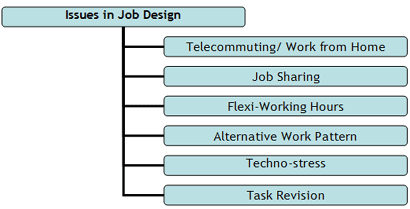Advantages and Disadvantages of Job Analysis
April 3, 2025
 Advantages and Disadvantages of Job Analysis
Advantages and Disadvantages of Job Analysis
Though job analysis plays a vital role in all other human related activities but every process that has human interventions also suffers from some limitations. The process of job analysis also has its own constraints. So, let us discuss the advantages and disadvantages of job analysis process at length. Advantages of Job Analysis Provides First…
 Approaches to Job Design
Approaches to Job Design
Job design is the next step after job analysis that aims at outlining, and organizing tasks and responsibilities associated with a certain job. It integrates job responsibilities and qualifications or skills that are required to perform the same. There are various methods or approaches to do this. The important ones are discussed below Human Approach…
 Benefits of Job Rotation
Benefits of Job Rotation
Job rotation is considered as an effective tool for successful implementation of HR strategy. It is about settling employees at the right place where they can deliver the maximum results. In today’s highly competitive world, this can be proved as the best strategy to find the immediate replacement of a high-worth employee from within the…
As we know, job design is a systematic organization of job-related tasks, responsibilities, functions and duties. It is a continuous process of integration of content related to job in order to achieve certain objectives. The process plays a vital role as it affects the productivity of employees and organizations.
However, there are a number of existing issues emerged recently while designing the jobs in organizations. These are alternative work patterns that are equally effective in handling organization’s functions.

By using computer networks, fax machines, telephones and internet connection, employees can communicate and perform the job from home. It eliminates the need of coming to office everyday and offers employees the convenience to work at the comfort of their home.
Though there are lots of advantages associated with this working style but it suffers from many limitations.
It allows employees to stay at home and manage their job tasks and functions without actually being present in the office but it doesn’t allow them to communicate with other employees and establishing relationships with them. They only deal with machines whole day, thus lose creativity. Moreover, it is a great hindrance in their way as it does not allow skill upgradation.
Employees can work in early hours as well as night hours. This is good for those individuals who have colleges or some other engagements during the day or specific hours of the day. The best part is that unlike telecommuting, flexi-timings give them chance to communicate with other employees too.
According to the latest concept, employees can work for fixed number of hours and then can attend to their personal needs during the left days.
Your email address will not be published. Required fields are marked *